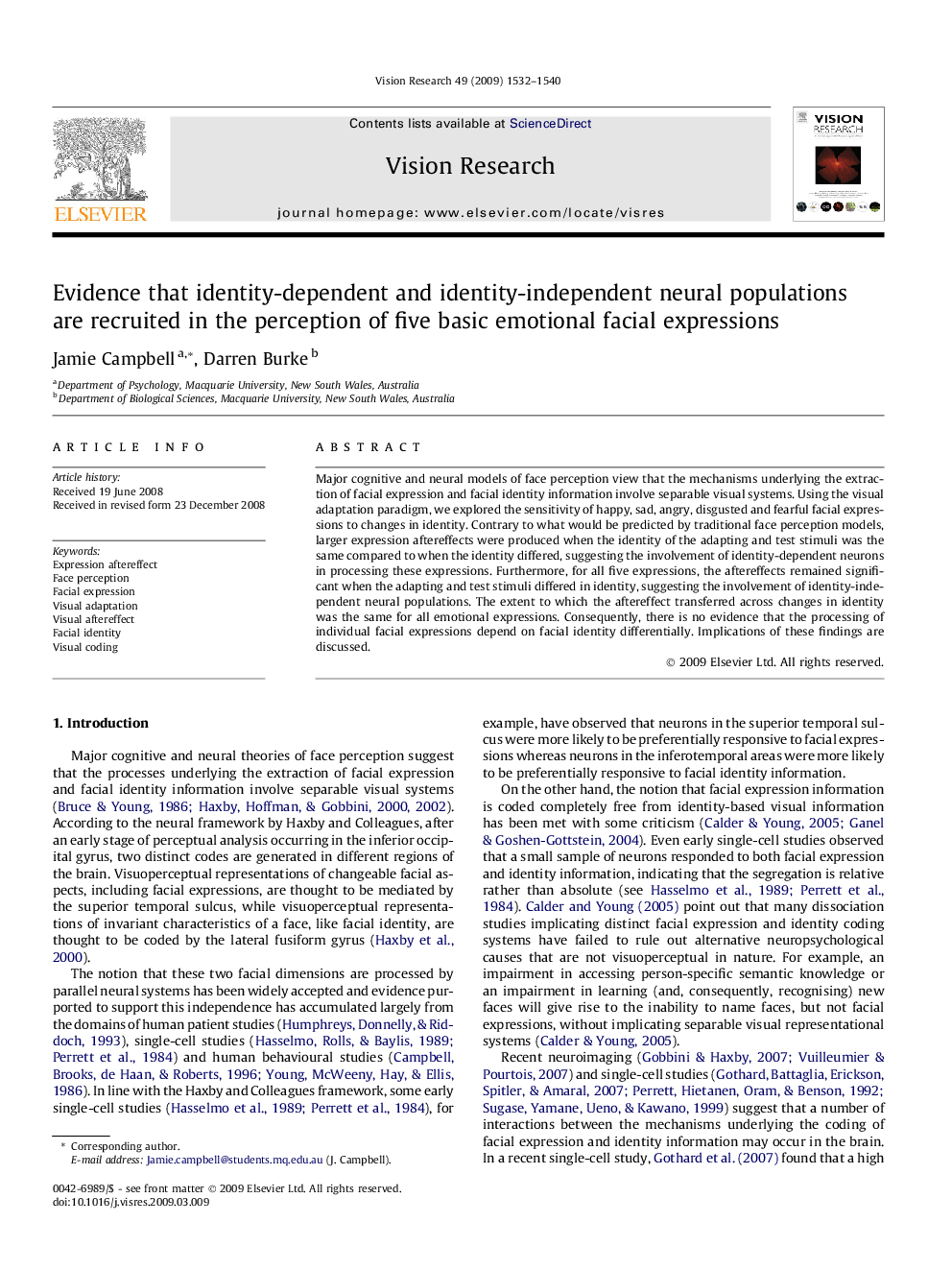| Article ID | Journal | Published Year | Pages | File Type |
|---|---|---|---|---|
| 4034780 | Vision Research | 2009 | 9 Pages |
Major cognitive and neural models of face perception view that the mechanisms underlying the extraction of facial expression and facial identity information involve separable visual systems. Using the visual adaptation paradigm, we explored the sensitivity of happy, sad, angry, disgusted and fearful facial expressions to changes in identity. Contrary to what would be predicted by traditional face perception models, larger expression aftereffects were produced when the identity of the adapting and test stimuli was the same compared to when the identity differed, suggesting the involvement of identity-dependent neurons in processing these expressions. Furthermore, for all five expressions, the aftereffects remained significant when the adapting and test stimuli differed in identity, suggesting the involvement of identity-independent neural populations. The extent to which the aftereffect transferred across changes in identity was the same for all emotional expressions. Consequently, there is no evidence that the processing of individual facial expressions depend on facial identity differentially. Implications of these findings are discussed.
